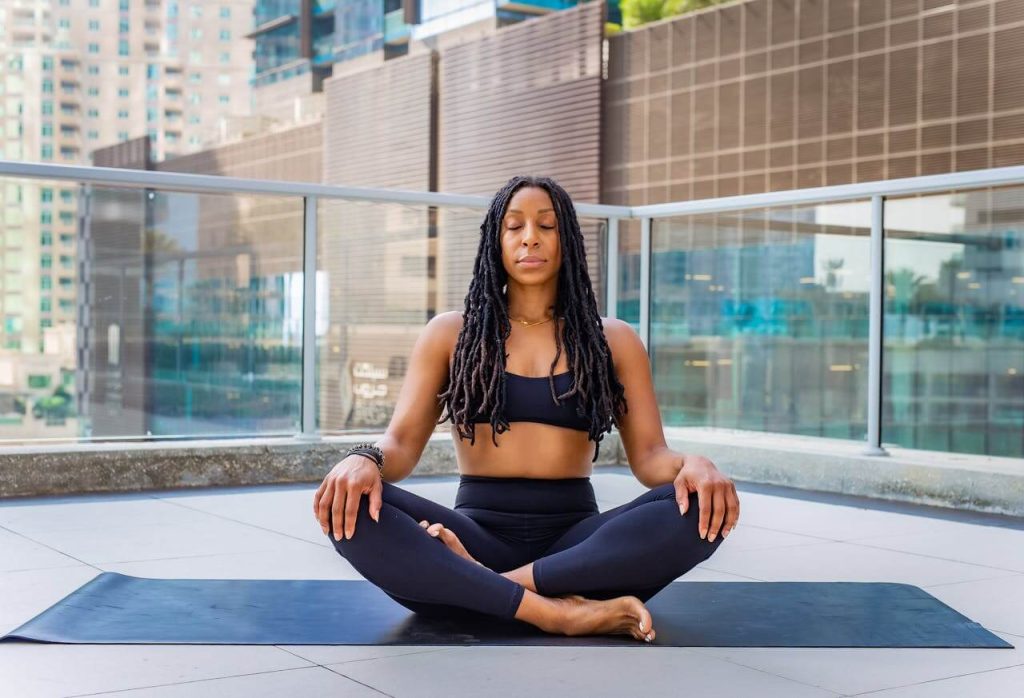Discover how to meditate effectively with our expert guide. Learn techniques, tips, and tools to cultivate mindfulness, reduce stress, and improve mental clarity.
Overview
Meditation is more than just sitting quietly with your eyes closed. When done correctly, it can transform your mental clarity, reduce stress, improve emotional health, and foster a deeper sense of self-awareness. In this guide, you will learn how to meditate effectively, the different types of meditation, tips for building a consistent practice, and common mistakes to avoid. Whether you are a beginner or have some experience, this guide will equip you with the tools to cultivate mindfulness and integrate meditation into your daily life.
By the end of this article, you will:
- Understand the benefits of meditation
- Learn step-by-step techniques for effective meditation
- Discover tips to create a successful meditation routine
- Explore different meditation styles to find what works best for you.
Why Learning How to Meditate Effectively Matters
Meditation is not just a trend—it’s a scientifically proven practice that offers numerous benefits for the mind and body. Here are some reasons why understanding how to meditate effectively is essential:
- Reduces Stress: Meditation helps calm the mind and reduces the production of stress hormones like cortisol.
- Improves Focus and Concentration: A consistent practice strengthens attention span and mental clarity.
- Enhances Emotional Health: Meditation can help manage anxiety, depression, and mood swings.
- Promotes Better Sleep: Regular practice helps improve sleep quality by calming the nervous system.
- Boosts Self-Awareness: Mindfulness meditation encourages introspection and self-understanding.
When you know how to meditate effectively, you are not just sitting quietly—you are actively training your mind to achieve these benefits.

Step-by-Step Guide: How to Meditate Effectively
1. Choose a Quiet Space
Your meditation environment plays a crucial role in your practice. To meditate effectively:
- Find a space free from distractions
- Sit on a chair, cushion, or floor with a comfortable posture.
- Ensure proper lighting and ventilation
- Consider using soft background music or natural sounds to enhance focus.
2. Adopt the Right Posture
Proper posture can significantly improve the effectiveness of your meditation:
- Keep your back straight but relaxed.
- Shoulders down and chest open
- Hands resting naturally on your knees or lap
- Chin slightly tucked, eyes closed or softly focused
3. Focus on Your Breath
Breathing is the foundation of effective meditation:
- Inhale deeply through your nose, filling your lungs completely.
- Exhale slowly through your mouth or nose.
- Notice the rhythm of your breath and the sensation of air entering and leaving your body.
- When your mind wanders, gently bring your focus back to your breath.
4. Practice Mindfulness
Mindfulness is the practice of being fully present in the moment:
- Observe thoughts, emotions, and bodily sensations without judgment.
- Acknowledge distractions and let them pass without attachment.
- Cultivate a sense of curiosity and non-judgmental awareness
5. Use Guided Meditation Tools
Guided meditations are an excellent way to learn how to meditate effectively, especially for beginners:
- Use apps like Headspace, Calm, or Insight Timer.
- Follow YouTube meditation videos from reputable instructors
- Listen to audio recordings that guide your breathing, visualization, or mindfulness.
Different Types of Meditation
Understanding various meditation styles helps you choose the one that aligns with your goals:
1. Mindfulness Meditation
- Focuses on present-moment awareness
- Encourages non-judgmental observation of thoughts and emotions
- Can be practiced anywhere, anytime
2. Concentration Meditation
- Focuses on a single object, sound, or mantra
- Strengthens attention and mental clarity
- Ideal for those who struggle with a wandering mind
3. Loving-Kindness Meditation (Metta)
- Cultivates compassion and positive emotions toward yourself and others
- Often involves repeating phrases like “May I be happy, may I be healthy”
4. Body Scan Meditation
- Focuses on different parts of the body
- Helps release tension and develop awareness of bodily sensations
5. Transcendental Meditation
- Involves silently repeating a personal mantra
- Aims to transcend ordinary thought and reach deep relaxation

Tips for Meditating Effectively
To ensure your meditation practice is productive and sustainable, consider these expert tips:
- Start Small: Begin with 5–10 minutes daily and gradually increase duration.
- Be Consistent: Practice at the same time each day to establish a habit.
- Eliminate Distractions: Turn off notifications and inform others of your meditation time.
- Be Patient: Meditation is a skill that develops over time; avoid self-criticism.
- Journal Your Experience: Reflecting on your meditation sessions can deepen self-awareness.
- Incorporate Movement: Light stretching or yoga before meditation can relax the body.
Common Mistakes to Avoid
Even experienced practitioners sometimes struggle. Avoid these pitfalls to meditate effectively:
- Expecting Immediate Results: Meditation benefits accumulate over time.
- Fighting Thoughts: Trying to stop thoughts can create tension; instead, observe them.
- Poor Posture: Slouching can lead to discomfort and distraction.
- Inconsistency: Sporadic practice reduces effectiveness.
- Ignoring Breath Awareness: Breath anchors the mind; neglecting it can make meditation shallow.
How We Can Help You Meditate Effectively
At Mindfulness Meditation Hub, we specialize in helping individuals learn how to meditate effectively through guided practices and expert advice. Our services include:
- Personalized meditation plans for beginners and experienced practitioners
- Guided audio and video meditations
- Mindfulness exercises tailored to your lifestyle
- Supportive community for sharing experiences and tips
By leveraging these tools, you can build a meditation practice that fits your needs, goals, and daily routine.
Final Thought
Learning how to meditate effectively is a journey, not a destination. With the right techniques, consistency, and guidance, meditation can profoundly impact your mental clarity, emotional well-being, and overall quality of life. Start small, remain patient, and allow your practice to grow naturally.
By following this guide, you now have a step-by-step roadmap to incorporate meditation into your daily life and experience its transformative benefits. Remember, the key to effective meditation is regular practice, awareness, and self-compassion.
FAQs for How to Meditate Effectively
What is grief meditation, and how does it help?
Grief meditation is a mindful practice that allows individuals to process feelings of loss, sadness, and mourning. It helps reduce emotional stress, provides clarity, and encourages healing.
Can grief meditation be done at home?
Yes, grief meditation can be practiced anywhere, including the comfort of your home. Using guided meditations or quiet personal reflection, you can create a safe space for emotional release.
How long should I meditate for grief?
Even 5–10 minutes a day can be beneficial. As you become more comfortable, you can extend sessions to 20–30 minutes to allow deeper emotional processing.
Is grief meditation suitable for everyone?
Yes, grief meditation is suitable for most adults. However, those experiencing severe emotional trauma may benefit from professional guidance alongside meditation.
What are the benefits of grief meditation?
Benefits include emotional release, reduced anxiety, improved sleep, enhanced self-awareness, and a greater sense of peace during the grieving process.
Do I need prior meditation experience to practice grief meditation?
No experience is necessary. Guided meditations specifically for grief make it easy for beginners to start and stay consistent.
How does grief meditation differ from general meditation?
Grief meditation specifically focuses on acknowledging, understanding, and releasing emotions associated with loss, whereas general meditation often centers on relaxation or mindfulness.
Can grief meditation help with long-term grief?
Yes, regular grief meditation helps individuals process ongoing grief, preventing emotional suppression and promoting healthier coping mechanisms over time.
Are there different types of grief meditation?
Yes, common types include guided grief meditations, loving-kindness meditation, breath-focused meditation, and body-scan meditation for emotional awareness.
How can I stay consistent with grief meditation?
Set a daily schedule, choose a quiet space, and start with short sessions. Using guided audio or apps can help maintain consistency.
Can grief meditation replace therapy?
Grief meditation is a supportive tool but not a replacement for professional therapy. Combining meditation with counseling or support groups offers comprehensive emotional support.
What if I feel intense emotions during meditation?
It’s normal to experience strong feelings. Allow yourself to observe without judgment and gently return to your breath or guided prompts.
Is it okay to cry during grief meditation?
Absolutely. Crying is a natural part of the healing process, and meditation provides a safe environment for emotional expression.
Can grief meditation be done in groups?
Yes, group grief meditation sessions can provide community support, reduce feelings of isolation, and help share collective healing experiences.
How soon after a loss can I start grief meditation?
You can begin grief meditation immediately after a loss or even months later. The practice can support healing at any stage of the grieving journey.

